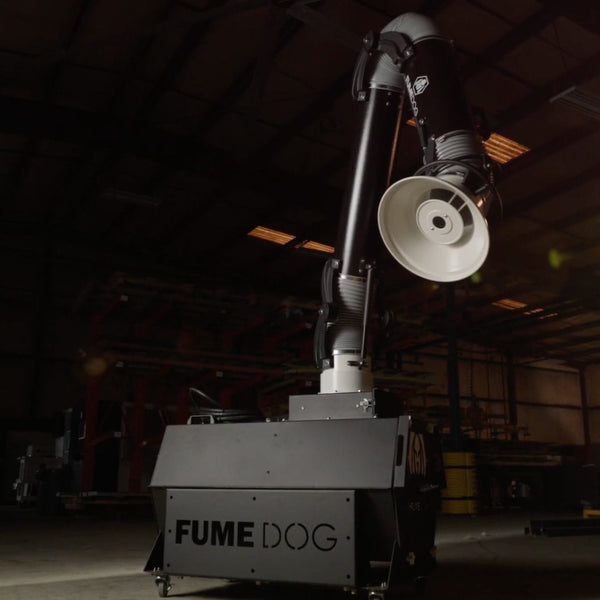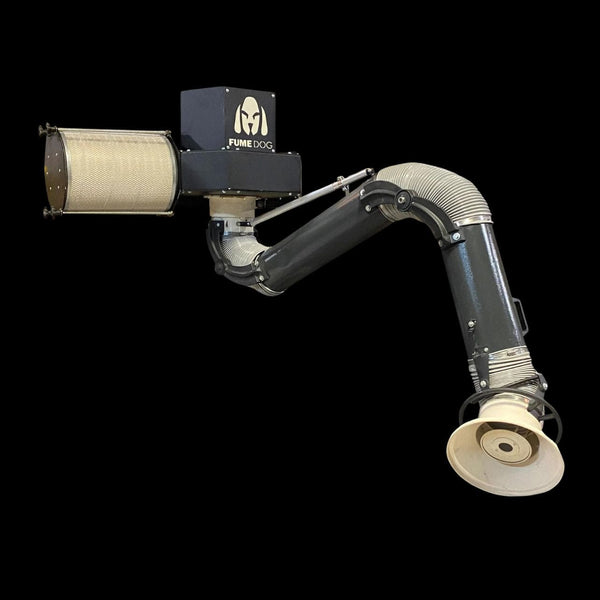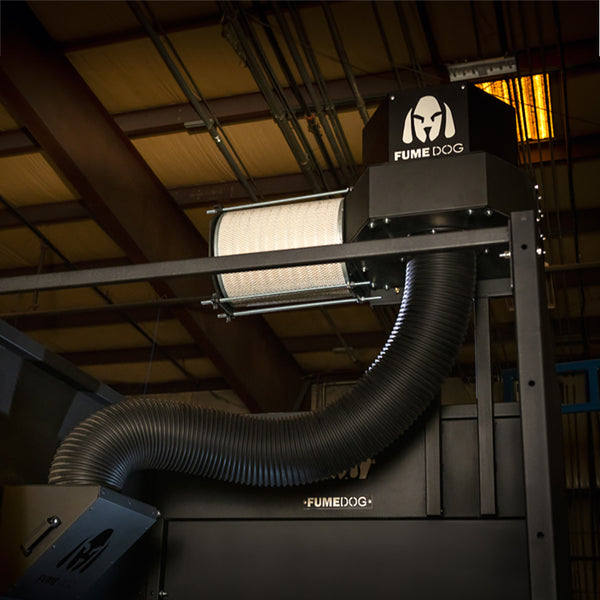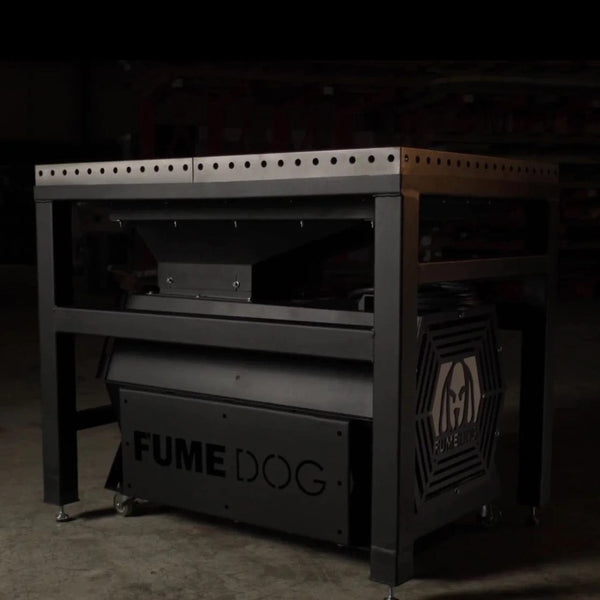
Welding can be dangerous if your lab isn't safe. Did you know that improper ventilation in a welding area can lead to harmful fumes? This blog will guide you in creating a safe and efficient welding lab.
Let's make your workspace safer!
Key Takeaways
- Proper Layout and Ventilation: A safe welding lab has a clear layout. It includes proper ventilation and fume extraction to remove harmful gases.
- Essential Safety Gear: Welders must wear flame-resistant clothing, gloves, helmets, and steel-toe boots. Fire extinguishers and emergency shutoff switches should be accessible.
- Bright Lighting: Effective lighting improves visibility. It helps welders spot hazards like molten metal or frayed wires quickly.
- OSHA Compliance: Follow OSHA guidelines for safety equipment and regular inspections. This includes checking fire extinguishers monthly and ensuring clean air quality.
- Employee Training: Regular training on using tools safely is crucial. Emergency drills teach workers how to handle fires or evacuations efficiently.
Build Your Safer Welding Lab Today
Ready to create a safe, efficient welding environment? Explore top-tier fume extraction systems and accessories to protect your team. Enhance your workspace with essential welding booth accessories and keep your equipment running smoothly with premium replacement filters.
For more expert tips, visit our welding safety blog. Have questions? Call us at 1-800-980-3481 to speak with our safety specialists and get started today!
Proper Layout and Design of a Welding Lab

A well-organized welding lab design enhances safety and efficiency. Ensure clear paths between workstations to avoid accidents and streamline workflow.
Workspace Organization and Flow
Keep the welding area clean and organized. Position all welding machines, tables, and tools in logical places. Make sure pathways are clear to avoid tripping hazards. Arrange gas cylinders securely away from flammable materials but close enough for easy use.
Ensure a smooth workflow by placing equipment where it’s needed most. Set up specific stations for each step of the welding process. Place safety glasses and other personal protective equipment within reach at all times.
This setup helps welders work more efficiently and safely.
Ventilation and Fume Extraction
Ventilation and fume extraction are critical in any safe welding lab. Proper ventilation reduces the risk of inhaling toxic fumes from welding processes. Use high-powered exhaust systems directly at the welding table or booth to capture harmful gases and particulates immediately.
Welding fumes contain hazardous substances like hexavalent chromium, which can harm your lungs if not managed properly.
Install fume extractors near each active welding station for maximum safety. These devices pull air contaminants away from welders, ensuring a safer workspace.
Effective systems also help maintain better air quality, keeping operators healthy and productive on the job.
Lighting and Visibility
A safe welding lab needs bright, even lighting. Good visibility helps welding operators spot hazards like molten metal or frayed welding wires. Proper lighting also reduces eye strain and improves work accuracy.
Install overhead lights that cover every part of the shop, including each welding booth and workspace. Use task lights to remove shadows in critical areas. Good visibility ensures welders see their tasks clearly, making it easier to weld safely while wearing a welding helmet or mask.
Essential Safety Equipment

Good welding requires the right safety gear to protect workers from hazards. Use proper equipment to ensure everyone's safety in the lab.
Personal Protective Equipment (PPE)
Welders must wear flame-resistant clothing to protect themselves from sparks. Gloves and jackets should be made of leather or other fire-resistant material. Helmets with proper welding masks shield the eyes and face from harmful radiation and flying debris.
Steel-toe boots guard against falling objects, while ear protection reduces noise hazards in a busy welding shop. Ensure PPE fits well to allow easy movement during work.
Safety gear isn't an option; it's a necessity.
Fire Extinguishers and Emergency Shutoffs
Fire extinguishers and emergency shutoffs are crucial in a welding lab. They ensure safety in case of accidents.
- Install Accessible Fire Extinguishers: Place fire extinguishers at easily accessible points. Put them near exits and high-risk areas.
- Regularly Inspect Extinguishers: Check fire extinguishers monthly. Ensure they are fully charged and operable.
- Train Staff on Use: Train all employees on how to use fire extinguishers. Conduct regular drills.
- Emergency Shutoff Switches: Install emergency shutoff switches for welding equipment. Label them clearly for quick access.
- Position Shutoff Switches Strategically: Place these switches in multiple locations. Ensure they can be reached without crossing the danger zone.
- Monthly Safety Checks: Schedule monthly checks of all shutoff switches. Verify that each switch works properly.
- Clear Emergency Exits: Keep all exits clear from obstacles. Make sure paths to exits are unobstructed at all times.
Having these measures in place minimizes risks in the welding lab, ensuring a safer working environment for everyone involved.
Welding Curtains and Shields
Welding curtains and shields protect workers from harmful UV rays, sparks, and splatter. These barriers also help control the spread of dangerous fumes. High-quality flame-resistant materials enhance safety in a welding lab.
Install these curtains and shields to separate workstations effectively. This setup prevents accidents by keeping other areas safe from flying debris or intense light. Ensure they meet industry safety standards for maximum protection.
Compliance with Safety Standards

OSHA Guidelines for Welding Environments
OSHA requires specific guidelines for welding environments to ensure the safety of everyone. Welding areas must have proper ventilation and fume extraction systems. These systems help remove toxic gases and particles from the air.
Good lighting is also crucial for visibility during welding tasks.
Workers should wear flame-resistant clothing, gloves, helmets with face shields, and safety glasses as part of their personal protective equipment (PPE). OSHA mandates regular inspections of all welding equipment to prevent accidents.
Keeping cables organized reduces tripping hazards in busy labs. Compliance with these rules creates a safe workspace for all welders.
Regular Safety Inspections
Regular safety inspections are crucial to maintain a safe welding lab. These check-ups help identify potential hazards and ensure compliance with regulations.
- Daily Visual Checks: Look over workspaces every day. Check for clutter, leaks, or damaged equipment.
- Weekly Equipment Reviews: Inspect welding machines and tools weekly. Ensure connections like welding cables are secure.
- Monthly Ventilation Assessments: Examine fume extraction systems monthly. Verify filters are clean and airflow is adequate.
- Fire Safety Audits: Check fire extinguishers and emergency shutoffs once a month. Confirm they are in working condition.
- Quarterly PPE Inspections: Review personal protective equipment every three months. Make sure all gear meets safety standards and is not worn out.
- Annual Safety Training Refreshers: Conduct yearly refresher courses on all safety practices. Keep everyone up-to-date on the latest OSHA guidelines for welding environments.
- Incident Reporting System Checks: Test incident reporting systems bi-annually to ensure they function correctly during emergencies.
Implementing these steps will enhance your lab's safety and efficiency, ensuring a secure working environment for all professionals involved in industrial welding tasks.
Material Handling and Storage Regulations
Store welding materials properly to prevent accidents. Keep flammable items away from heat sources. Use proper containers for hazardous materials, labeled clearly for quick identification.
Follow OSHA guidelines to ensure a safe environment. Train workers on correct handling and storage procedures. Inspect storage areas frequently to maintain safety standards in the welding lab.
Training and Safety Protocols

Employees need clear instructions on operating welding equipment safely. They must also know how to handle emergencies quickly and effectively.
Comprehensive Employee Training Programs
Comprehensive employee training programs ensure welding safety in the lab. They teach proper techniques and emergency responses. Here’s how to set up these programs:
-
Orientation Sessions
New hires need an introduction to lab rules and safety guidelines.
-
Skill Assessment Tests
Evaluate existing skills to identify areas that need improvement.
-
Hands-On Training
Conduct practical sessions for using welding equipment safely.
-
Emergency Drills
Practice fire, first aid, and evacuation procedures regularly.
-
Periodic Refresher Courses
Schedule ongoing training sessions to keep knowledge current.
-
Safety Protocol Reviews
Regularly go over the proper use of personal protective equipment (PPE).
-
Use of Simulation Tools
Implement virtual-reality tools to simulate welding tasks safely.
-
Certification Programs
Offer certifications that meet OSHA guidelines for welders.
-
Feedback Mechanisms
Collect feedback from employees about training effectiveness.
-
Mentorship Programs
Pair new welders with experienced ones for guidance and support.
-
Training Material Updates
Update all training materials as new technologies or regulations emerge.
-
Record Keeping Practices
Maintain detailed records of all training sessions attended by each worker.
These steps help maintain a safe environment where everyone wears flame-resistant clothing and follows best practices in a welding lab.
Emergency Response Procedures
Emergency response procedures are vital in a welding lab. They ensure everyone knows how to act fast and stay safe.
- Establish Clear Exit Routes:
- Mark all emergency exits clearly with signs.
- Keep exit pathways free from obstructions.
- Conduct regular drills to practice using these routes.
- Install Fire Extinguishers:
- Place fire extinguishers near each workstation.
- Train employees on how to use them effectively.
- Inspect extinguishers monthly for proper function.
- Create an Emergency Contact List:
- List emergency numbers, including local fire departments.
- Post this list in visible areas around the lab.
- Include contacts for first aid and facility management.
- Designate First Aid Stations:
- Equip stations with basic medical supplies.
- Ensure easy access to first aid kits for all employees.
- Train personnel in basic first aid and CPR.
- Use Emergency Shutoff Systems:
- Install shutoff switches for gas and electricity at accessible locations.
- Label these switches clearly so anyone can find them quickly.
- Include shutoff procedures in employee training programs.
- Develop Evacuation Procedures:
- Map out evacuation routes specific to your layout.
- Assign roles like floor wardens or guides.
- Perform regular drills to practice evacuations efficiently.
- Set Up Communication Channels:
- Use loudspeakers or alarm systems for alerts.
- Establish a meeting point outside the building for roll call after evacuation.
- Ensure that communication equipment is functional at all times.
- Conduct Regular Safety Drills:
- Organize quarterly safety drills involving the entire team.
- Simulate different scenarios like fires or gas leaks during drills.
- Provide feedback post-drill to improve performance each time.
-
Maintain Incident Reports:
Log every incident no matter how minor it seems.
Analyze these reports to identify recurring issues.
Adjust procedures based on findings from these logs.
Safe Equipment Operation Practices
Safe equipment operation is vital in a welding lab. Proper handling and use of tools prevent accidents.
- Check equipment before use. Ensure all parts are intact and functional.
- Wear flame-resistant clothing. This protects against sparks and heat.
- Follow the manufacturer’s guidelines. Use each tool as intended.
- Maintain clean workstations. Remove clutter to avoid tripping hazards.
- Use welding curtains and shields. These protect others from UV rays and sparks.
- Keep emergency shutoffs accessible. Quick access prevents major incidents.
- Store materials properly. Organized storage avoids falling objects.
- Conduct regular training drills. Practice ensures quick, correct responses in emergencies.
These steps help maintain a safe welding environment for everyone involved.
Conclusion
Creating a safe welding lab is crucial. Arrange your space wisely and use proper ventilation. Equip the lab with all essential safety gear. Follow OSHA rules to stay compliant. Train employees well on safety protocols.
A secure welding environment leads to better work and fewer accidents.
FAQs
1. What does a safe welding lab look like?
A safe welding lab is well-organized with proper ventilation, clear work zones, and essential safety equipment such as fire extinguishers, welding curtains, and personal protective equipment (PPE). It complies with OSHA guidelines and prioritizes employee safety through training and emergency protocols.
2. Why is ventilation important in a welding lab?
Ventilation is crucial to remove harmful fumes and gases produced during welding. A safe welding lab uses fume extraction systems to ensure clean air, protecting workers' respiratory health.
3. What personal protective equipment (PPE) is required in a welding lab?
PPE includes welding helmets, gloves, fire-resistant clothing, safety glasses, and steel-toed boots. These protect workers from burns, UV radiation, and other hazards in a welding environment.
4. How do welding curtains improve safety in a lab?
Welding curtains shield bystanders from harmful UV rays and sparks, creating safer workspaces. They also help contain fumes for more effective ventilation in a safe welding lab.
5. What training should employees have in a welding lab?
Employees should be trained in proper equipment use, emergency procedures, and workplace safety standards. Training ensures everyone understands the risks and knows how to maintain a safe welding lab environment.
6. How often should a welding lab be inspected?
Regular inspections, typically monthly or quarterly, help identify and address safety risks. Routine checks ensure compliance with OSHA guidelines and maintain a safe welding lab for all users.





